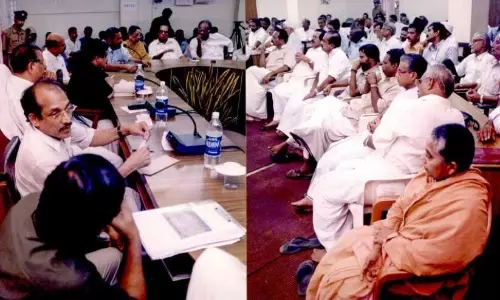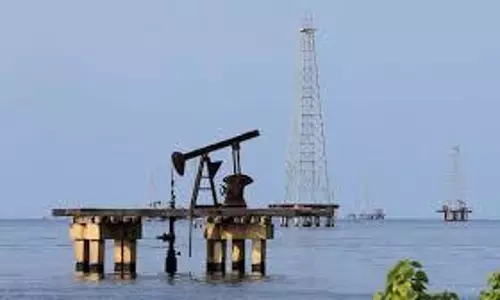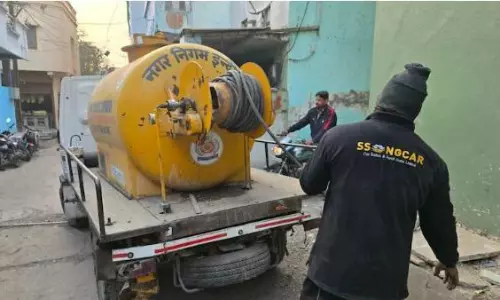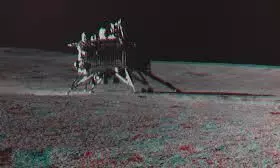
ISRO confirms Moon was once a fiery ball of molten rock
text_fieldsA new study from ISRO's Chandrayaan-3 mission has confirmed a major scientific theory: the Moon was once a hot, molten ball of rock.
This discovery was made by the team behind the mission, marking a significant breakthrough in our understanding of the Moon's early history.
The findings were published in the prestigious British scientific journal Nature, renowned for showcasing significant scientific advancements. The lead author of the paper, Dr. Santosh V. Vadawale from the Physical Research Laboratory (PRL) in Ahmedabad, led a team of nearly three dozen scientists.
Dr. Vadawale stated, "Our analysis of the lunar soil confirms that the Moon was once a molten ball of rock around 4.4 billion years ago, shortly after its formation."
This discovery supports the Lunar Magma Ocean (LMO) hypothesis, which suggests that a Mars-sized body collided with Earth approximately 4.5 billion years ago, resulting in debris that eventually coalesced to form the Moon. Dr. Vadawale explained that the early Moon was composed entirely of molten magma, similar to Earth's core, with temperatures around 1500 degrees Celsius.
India's Chandrayaan-3 mission made global history by landing near the Moon's South Pole at the Shiv-Shakti point, an achievement no other nation had accomplished. This location was of particular interest because the lunar soil's elemental composition in this region had never been studied before. Dr. Vadawale noted that the composition of the lunar soil is not drastically different from Earth's soil, and because there is no weathering on the Moon, this finding provides insight into the ancient history of our Solar System.
Speaking to NDTV, ISRO Chairman Dr. S Somanath highlighted the significance of Chandrayaan-3's achievements. He noted that the mission not only demonstrated India's technological capabilities with a successful soft landing but also contributed groundbreaking scientific findings. The study, published in Nature, presents the first in-situ elemental analysis of lunar soil near the Moon's South Pole, a milestone for space exploration.
The Pragyan rover, a six-wheeled, 26-kilogram vehicle, traveled approximately 103 meters across the lunar surface during its 10-day mission. It moved at a slow pace of one centimeter per second, meticulously analyzing the lunar soil using its onboard alpha particle X-ray spectrometer.
Nature journal commented on the study, stating that the analysis of lunar soil in the Moon's southern high-latitude regions suggests remnants of a former ocean of magma. Previous research focused on samples from lunar mid-latitudes, such as those collected during the Apollo missions. However, the Chandrayaan-3 mission provided new data from the Moon's South Pole, offering fresh insights into the Moon's geological history.
Dr. Vadawale and his colleagues found a relatively uniform elemental composition in the lunar regolith surrounding the lander, primarily consisting of ferroan anorthosite, a type of rock. Their analysis suggests that the similar chemical composition between the South Pole samples and those from the Moon's equatorial region supports the Lunar Magma Ocean hypothesis. As the Moon cooled during its formation, lighter anorthositic rocks floated to the surface, while heavier minerals sank to form the mantle.
Interestingly, the presence of magnesium minerals detected by the Pragyan rover, which cannot be explained by the LMO hypothesis, may indicate deeper material excavated by the nearby South Pole-Aitken impact.
The study concludes that the composition of Vikram's landing site aligns with the LMO hypothesis, reinforcing the idea that the lunar highlands were formed by the flotation of lighter rocks.
One of the most exciting implications of this discovery is the potential for future lunar agriculture. Since the Moon's soil is not vastly different in elemental composition from Earth's soil, Chandrayaan-3's findings open up the possibility of using lunar regolith for controlled growth of vegetation in chambers, potentially supporting permanent habitation on the Moon. However, additional water and organic matter would need to be added to make this a reality.






















